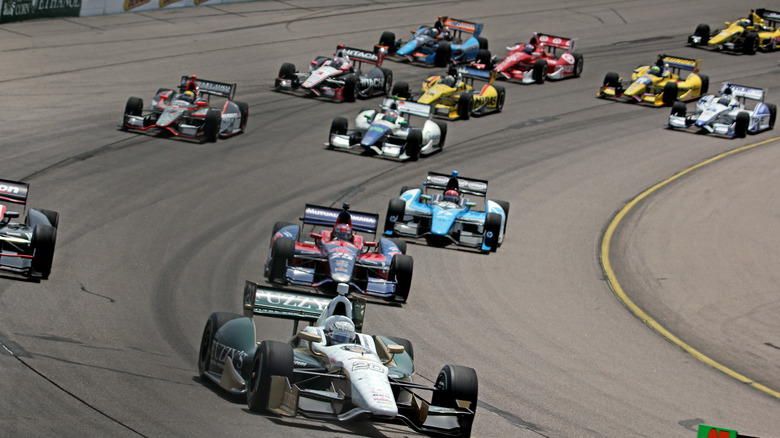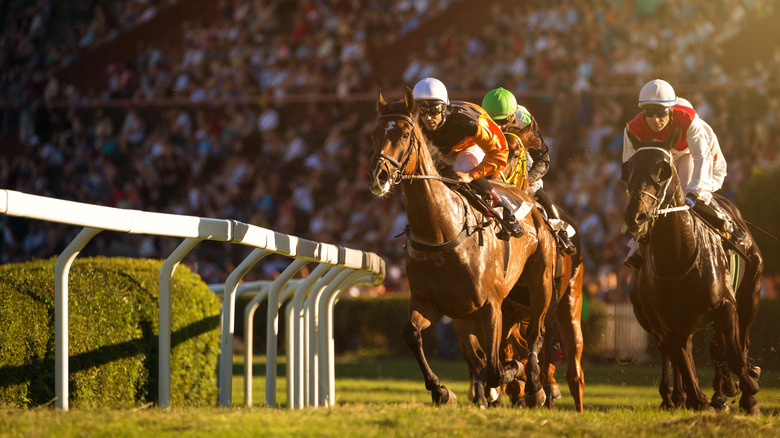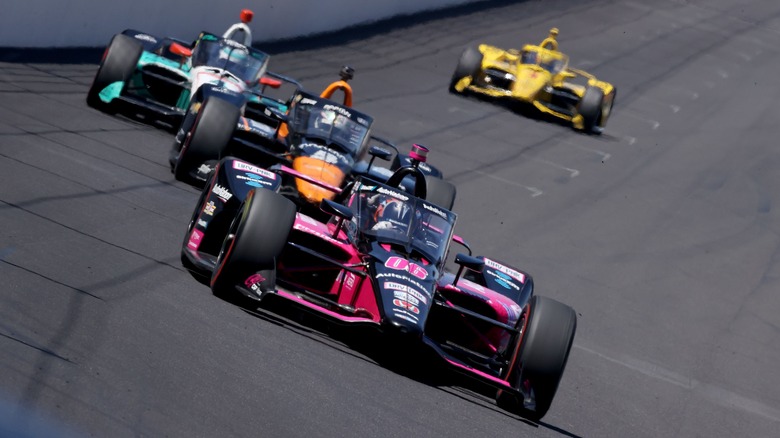What Is A Pole Sitter In Racing?
It's that time of year once again: At the Indianapolis Motor Speedway, crowds will gather to watch their favorite drivers race 200 laps at the Indy 500. This year's "Greatest Spectacle in Racing" takes place in Indiana on May 29. Thousands of fans will gather at the speedway to watch their favorite drivers burn rubber as they race 500 miles at top speed. 33 of the best drivers from around the world will compete, but only one will claim the pole sitter spot. Is that a good or bad thing — and what exactly does it mean to be a pole sitter?
The idea of a pole sitter was created in the late 1800s, per Lexico. During horse races, the jockey and horse duo that raced the fastest in the qualifying rounds earned a special place called the pole position. Back then, it referred to the inside position of the racetrack, near the boundary fence in the middle of the track.
How do you earn a pole position?
The horse starting there would be right next to the pole, per BBC, hence the name "pole sitter." The name stuck around after car racing grew in popularity during the early 1900s, when automobiles began to reach speeds of up to 80 miles per hour (per Britannica).
According to BBC, the pole sitter is the absolute best position. But the racer doesn't just get the pole-sitting spot — they have to earn it. At most professional races today, there are qualifying rounds before the official race. Whoever clocks the fastest time during a qualification race will take the pole spot.
According to How Stuff Works, there are actually two coveted pole positions, inner and outer. At some races, like the Daytona 500, the fastest racer takes the inside pole position, while the second fastest takes the outer pole spot. The other drivers are then assigned spots according to how fast they raced in qualifying events or in the last season's races, depending on the event.
Breaking Indy 500 records
According to Indianapolis Motor Speedway, the world record speed for a pole sitter has just been broken for the first time in decades. Racecar driver Scott Dixon broke a 25-year-old record set by Scott Brayton. Driving four laps in the qualifying rounds, he drove over 234 miles per hour.
It will be Dixon's fifth time in the pole position, and it is the fastest time average speed recorded in a qualifying round in more than 100 years of Indy 500 events. Per CBS Sports, although Dixon started in a pole position in the 2021 race as well, his car ran out of gas at one point, and Hélio Castroneves went on to win the race. So even if a driver starts in a pole position, it's no guarantee they'll win.
Per Indianapolis Motor Speedway, this year's Indy 500 is expected to be a nail-biter. This year's qualification rounds had the highest speeds ever recorded in the history of the race, and many of the starting racers drove 233 miles per hour.


